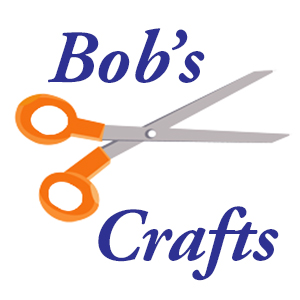Beverage Can Train
Let’s make a decorative train from recycled beverage cans.
This project is rated: DIFFICULT
Materials needed:
- Beverage cans
- Tin snips or scissors
- Glue
- Wood
- Wheels and Axles
- Wire
- File or Sandpaper
- Paint
Although this train looks like a toy, it is not recommended that children play with it. You may leave some sharp edges that could cut fingers; also, these cans are made of very thin metal and could be easily crushed, even by a child. It is suggested that the train be used only as an ornament.
Project Instructions
-
Select three (or more) empty beverage cans. Rinse them out thoroughly.
-
You need to make axle supports for the wheels and axles. For each car that you are going to make, cut 2 pieces of wood that are 3/4 inch by 3/4 inch in cross-section and 2.75 inches in length. After cutting these pieces of wood, each one needs to have one edge cut out to conform to the shape of the can. Each finished axle support should look like the pattern shown at right
4. The “engine” needs some additions to make it look somewhat like a steam engine. From another can, cut a piece of metal that is 2 inches wide and 7 inches long. Smooth the edges so they will not be dangerous. Another alternative is to cut the piece of metal 2.5 inches wide and fold under a quarter inch on each side so that the edge is a fold.
5. Fasten this piece of metal to the can to give the appearance of a cab. Since you cannot solder aluminum, it is necessary to glue the “cab” to each side at the rear of the can.
6. You also need a smoke stack. Cut another piece of metal that is 1.125 inches wide and 2 inches long. Form this into a circle with the ends overlapping and glue. Set the “smokestack” near the front of the “engine” and glue it in place by putting a quantity of glue inside of it.
7. You also need to provide a way of coupling the “cars” together. The pull tab can be used as half of the coupling. A hook must be provided on the bottom of one can to connect with the tab on another can. For the train illustrated above, hooks were made out of heavy wire. See the picture at the right of a hook design. The hook is fastened to the bottom of a can with glue.
8. Paint each car any color you desire.
After the paint is dry, you can add wheels. If you have the skill and the tools, you may want to make the wheels. The ones in the project image were purchased at a craft store. If you make your wheels, you can attach them using screws as axles. The ones shown used purchased axles that were fastened to the supports by drilling a hole in the axle support and gluing the axle in it.
Alternate Locomotive
The following describes a locomotive made with a wood cab and wood smokestack. From a block of wood that is 2.75″ by 2.25″ by 1.75″, shape the cab as follows:
- Make the front (or back) cross section into the shape shown at right. The height should be about 1.75 inches and the width 2.25 inches.
-
Then cut the rear of the cab at a slant so the side view is approximately as shown at right.
-
Glue the cab near the bottom of a can. From a 5/8 inch dowel, cut a 2 inch piece to use for a smoke stack. Round one end of the dowel to be concave to fit the curve of the can. Glue the smokestack in place.
-
Glue on axle supports as described in the other version of the locomotive above.
-
When the glue is dry, paint the engine black (or a color of your own choice.)
-
After the paint is dry, paint and mount the wheels.








